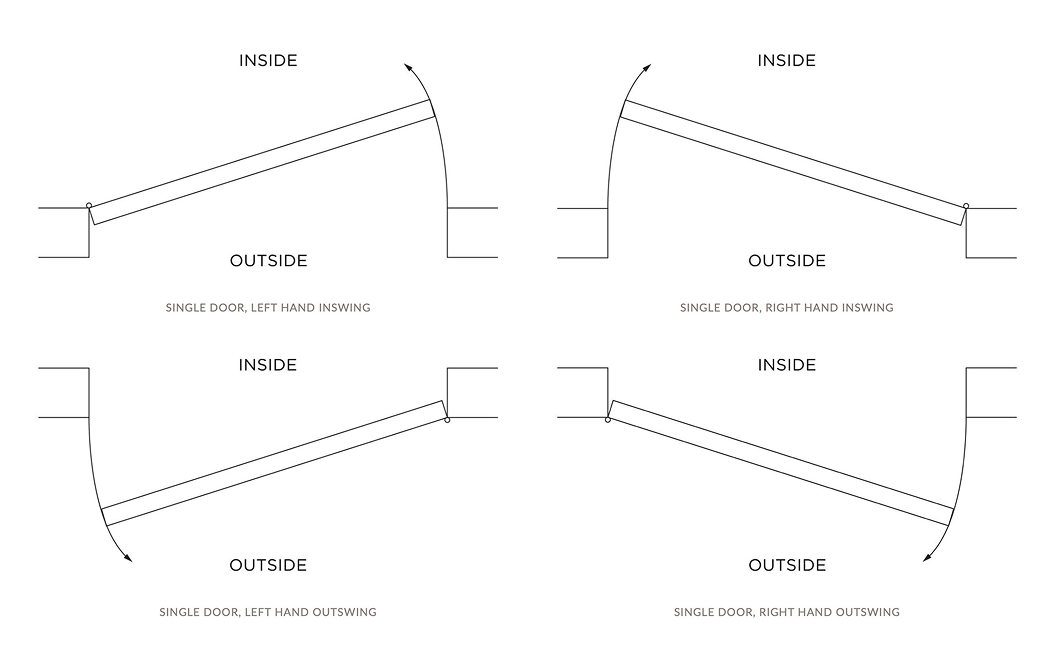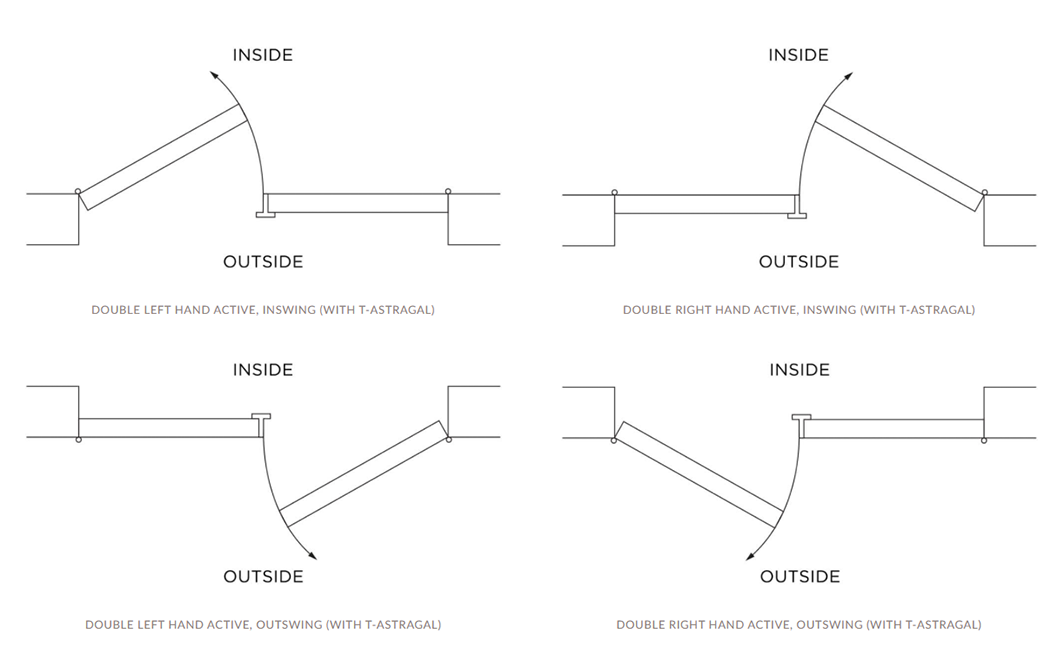
Determining Handing and Swing
“Handing and swing” describe how a door opens – hinge placement and swing direction.
How to Determine Handing:
- Stand with your back to the hinge jamb.
- If the door opens to the left, it is a Left-Hand (LH) door.
- If the door opens to the right, it is a Right-Hand (RH) door.
How to Determine Swing:
- If the door swings into the room or home, it is an Inswing door.
- If the door swings out of the room or home, it is an Outswing door.
Single Doors:
The diagrams below show handing and swing options for single doors. The arrows indicate inswing or outswing direction.

Double Doors:
One door is designated Active (operable handle/lever) and the other Inactive (no active handle).
Inactive door includes:
- T-Astragal: Acts as a door stop for the active door.
- Flush Bolt(s): Secures the inactive door closed
- Interior Double Doors: Flush bolt at the top.
- Exterior Double Doors: Flush bolts at top and bottom.
- All 7’0” or taller pre-hung double doors include an extended top flush bolt for easier reach.
The diagram below shows active door handing and swing direction.

Ball Catch, Bypass, and Bi-Fold Doors
Sun Mountain offers interior double doors in a variety of specialized configurations: “ball catch,” “bypass,” or “bi-fold.” These options are often used on closet or pantry door applications.
Ball Catch
- Common for outswing closet doors with non-working (dummy) handles.
- Includes ball catch hardware – standard with door.
Bypass Doors
- Slide past each other on a track, making them great for saving space.
- Track hardware is included.
Bi-Fold Doors
- Hinged in the middle and folds like an accordion.
- Track hardware included.
Note: Dummy handles are optional and not pre-bored on these doors.
The diagrams below illustrate these configurations for easy reference.

